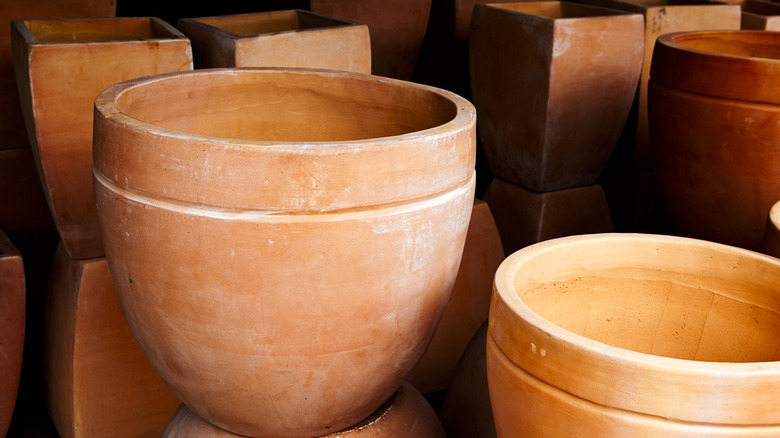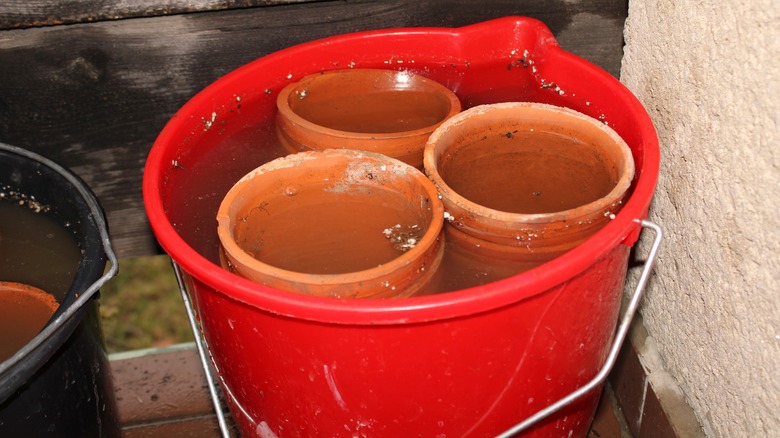The All-Natural Ingredient That Will Keep Your Terracotta Planters Fungus-Free
Terracotta pots create a beautiful natural look by complementing green foliage with their earthy tones. Their porous material helps soil dry out quicker, and while that may be a problem for some plants, it can be a lifesaver for gardeners who tend to overwater. This porous material can also harbor some problems, like holding moisture in the winter that can cause the pots to break if they freeze. Another challenge that moisture brings to a porous material like terracotta is the development of fungus. When your pots have a fungus issue, reusing them may harm your plants. Fortunately, you can wash your terracotta pots with castile soap to remove fungi.
Soap is a surfactant, meaning it removes dirt and germs rather than killing them. Castile soap may not be antibacterial or antifungal, but it works to combat fungus by removing the grime so fungal spores are rinsed away with water. Washing your terracotta pots with castile soap ensures the fungi is physically removed.
How to clean your terracotta pots
Terracotta pots can develop mineral deposits thanks to the porous material. They aren't always easy to remove, so it will take some extra effort to get your planters spotless. Start by rubbing or scraping off excess dirt with a rag, making sure to go over mineral deposits while you do this. Once you've removed everything you can, add some castile soap to the water and wash the pots thoroughly. Scrub the tough spots extra well, and be sure to cover every nook and cranny. If you're cleaning up moldy pots, wear gloves and dispose of the water away from other plants if you're washing in a bucket outdoors. Castile soap is a surfactant that will remove the fungal spores from the pot, but it won't kill them, so you don't want to pour those spores into other plants.
If mineral deposits or moldy spots are giving you grief, use steel wool or a stiff scrubbing brush. Scrub the areas with soapy water as you did the first time, but this time, add vinegar. An International Journal of Microbiology study showed that apple cider vinegar has antifungal properties, most likely because of its acetic acid content. White vinegar in your kitchen also contains acetic acid, so you can use that as well. Vinegar will help kill the mold while the soap removes it from the surface, ensuring you won't transfer fungi to your next plant.

